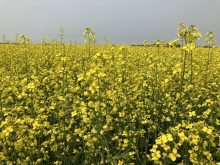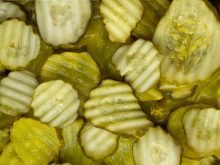AS SURE as the sun rises in the east and the Toronto Maple Leafs will fall out of playoff contention in January, parts of Canada’s farm sector always will be in prolonged slump.
And that is the inherent flaw in a farm support program (business risk management is the preferred bureaucratic term, since it does not imply subsidy) that triggers support based on historic profit margins.
Less than a year into its life, federal and provincial agriculture ministers are trying to figure out how to make the margin-based AgriStability program work for livestock producers who have been in income crisis for several years.
Read Also

Growth plates are instrumental in shaping a horse’s life
Young horse training plans and workloads must match their skeletal development. Failing to plan around growth plates can create lifelong physical problems.
The only thing surprising about this is that ministers seem surprised.
There was a reason the Canadian Agricultural Income Stabilization program was despised by most farmers. It was based on the presumption that farmers live in a cyclical industry and every second year or so there is a solid profit to boost the historic average profit margin.
When profits fall 30 percent or more below a five-year historic average with the best and worst years taken out, there is a payout.
But what if the median three of the past five years have produced minimal or no profits? Seventy percent of one is 0.7. A 30 percent drop in not much means little or no support.
So it was with the grain industry through the early years of the 21st century.
So it is now for the livestock industry, whose income has been slashed by rising input cots, the effect of the strong Canadian dollar for most of the year and country-of-origin-labelling.
The program doesn’t work for sectors in prolonged slumps. Surely that isn’t news to the politicians and bureaucrats who designed and sold this program.
The historic margin benchmark, rather than a need benchmark or a production-cost benchmark, was inherited from an earlier policy train wreck, the Agricultural Income Disaster Assistance program, designed a decade ago to deal with a hog industry income collapse.
That tainted policy was grafted into the successor CAIS program.
Its unpopularity and ineffectiveness led Conservatives to campaign against it in 2004 and 2006, promising to destroy the evil Liberal love child with a more farmer-friendly Conservative progeny.
Enter AgriStability, which Conservatives have bragged fulfils their promise to bury CAIS.
But AgriStability is merely CAIS with lipstick.
It has the same fatal historic-margin flaw so beloved of bureaucrats and all who feel uncomfortable with the idea that farm programs should ‘reward’ producers who cannot make money from the market, no matter how distorted or bizarre it is.
So here we are again, watching farmers calling for government creativity.
And here we are again, watching governments scratch their collective heads to figure out how to tweak a program whose premise about cyclical agriculture is fundamentally flawed.
Governments will muddle through. Farm sectors will struggle through, although weakened and diminished.
And Canada’s primary farm support program will continue to nurse a flaw that you could drive a World Trade Organization trade dispute truck through.














